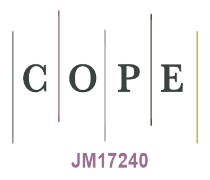Face likeability – introduction to the assessment of determinants
DOI:
https://doi.org/10.18778/1427-969X.19.06Keywords:
likeability, face, first impressionAbstract
The goal of the current study was to make an introduction to exploring the determinants of face likability. It was also essential for the study to make a distinction between likeability and physical attractiveness since likeability hasn’t been researched into in Polish studies so far. The influence of emotional expressions on the judgements of face likeability was also examined and the subjectivity of the judgements was explored. 82 subjects (41 men and 41 women) aged 18 to 30 participated in the study. The results indicated that likeability cannot be equated with physical attractiveness and that the judgements about it are made subjectively. It was also demonstrated that faces with positive emotional expressions may seem more likeable. There are still a lot of questions concerning face likeability that need to be answered; this study will hopefully encourage the further debate.
References
Aronson E., Wilson T. D., Akert R. M. (1997). Psychologia społeczna. Poznań: Zysk i S-ka.
Google Scholar
Bar M., Neta M., Linz H. (2006). Very first impressions. Emotion, 6, 269–278.
Google Scholar
DOI: https://doi.org/10.1037/1528-3542.6.2.269
Baumeister R. F., Leary M. R. (1995). The need to belong: Desire for interpersonal attachments as a fundamental human motivation. Psychological Bulletin, 117, 497–529.
Google Scholar
DOI: https://doi.org/10.1037/0033-2909.117.3.497
Brodsky S. L., Griffin M. P., Cramer R. J. (2010). The Witness Credibility Scale: An outcome measure for expert witness research. Behavioral Sciences and the Law, 28, 892–907.
Google Scholar
DOI: https://doi.org/10.1002/bsl.917
Bruce A. J., McDonald B. G. (1993). Face recognition as a function of judgements of likability/ unlikability. The Journal of General Psychology, 120, 451–462.
Google Scholar
DOI: https://doi.org/10.1080/00221309.1993.9711159
Cottrel C. A., Neuberg S. L., Li N. P. (2007). What do people desire in others? A sociofunctial perspective on the importance of different valued characteristics. Journal of Personality and Social Psychology, 92, 208–231.
Google Scholar
DOI: https://doi.org/10.1037/0022-3514.92.2.208
Covin R. (2011). The need to be liked, http://books.google.pl/books?hl=en&lr=&id=_bnsMflf-mXgC&oi=fnd&pg=PA1&dq=the+need+to+be+liked&ots=rFY5KEGq6-&sig=FOsKQG-KqjTGJbkZoF82LwcDFuQs&redir_esc=y#v=onepage&q=the%20need%20to%20be%20liked&f=false [dostęp: 24.07.2013].
Google Scholar
Ebner N. C. (2008). Age of face matters: Age-group differences in ratings of young and old faces. Behavior Research Methods, 40, 130–136.
Google Scholar
DOI: https://doi.org/10.3758/BRM.40.1.130
Field A. (2013). Discovering statistics using IBM SPSS Statistics. Los Angeles: Sage Publications.
Google Scholar
Galper R. E., Weiss E. (1975). Attribution to behavioral intentions to obese and normal-weight stimulus persons. European Journal of Social Psychology, 5, 425–440.
Google Scholar
DOI: https://doi.org/10.1002/ejsp.2420050402
Hornby A. S. (red.) (1974). Oxford Advanced Learner’s Dictionary of Current English. London: Oxford University Press.
Google Scholar
Larrance D. T., Zuckerman M. (1981). Facial attractiveness and vocal likeability as determinants of nonverbal sending skills. Journal of Personality, 49, 349–362.
Google Scholar
DOI: https://doi.org/10.1111/j.1467-6494.1981.tb00219.x
Reysen S. (2005). Construction of a new scale: The Reysen Likability Scale. Social Behavior and Personality, 33, 201–208.
Google Scholar
DOI: https://doi.org/10.2224/sbp.2005.33.2.201
Reysen S. (2006). A new predictor of likeability: laughter. North American Journal of Psychology, 8, 373–382.
Google Scholar
Sprecher S., Regan P. C. (2002). Liking some things (in some people) more than others: Partner preferences in romantic relationships and friendships. Journal of Social and Personal Relationships, 19, 463–481.
Google Scholar
DOI: https://doi.org/10.1177/0265407502019004048
Willis J., Todorov A. (2006). First impressions: Making up your mind after a 100-ms exposure to a face. Psychological Science, 17, 592–598.
Google Scholar
DOI: https://doi.org/10.1111/j.1467-9280.2006.01750.x
Downloads
Published
How to Cite
Issue
Section
License
Copyright (c) 2015 © Copyright by Joanna Filipowicz, Łódź 2015; © Copyright for this edition by Uniwersytet Łódzki, Łódź 2015

This work is licensed under a Creative Commons Attribution-NonCommercial-NoDerivatives 4.0 International License.









